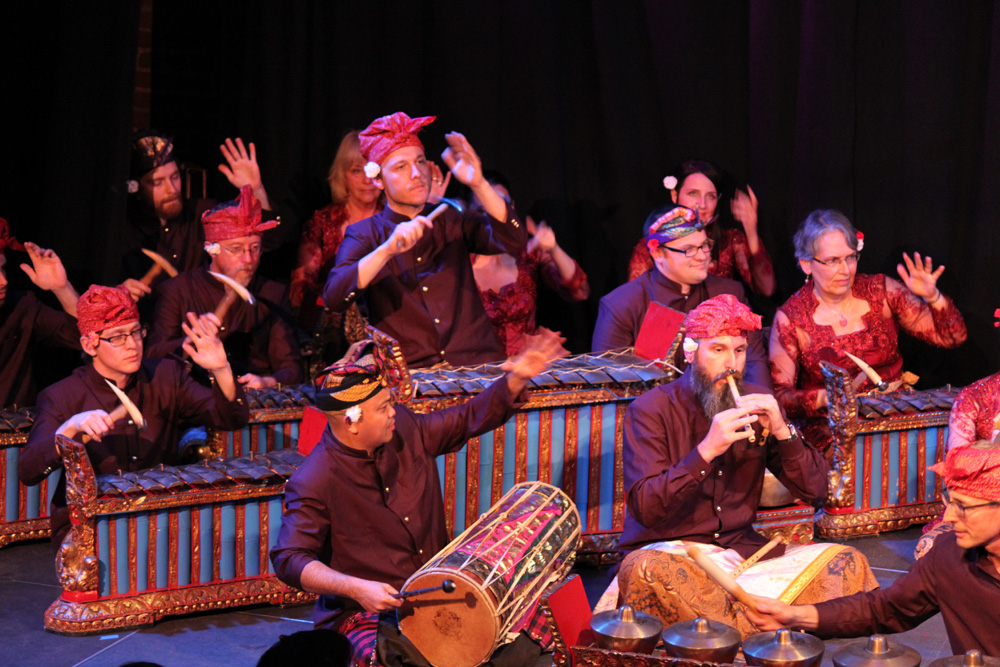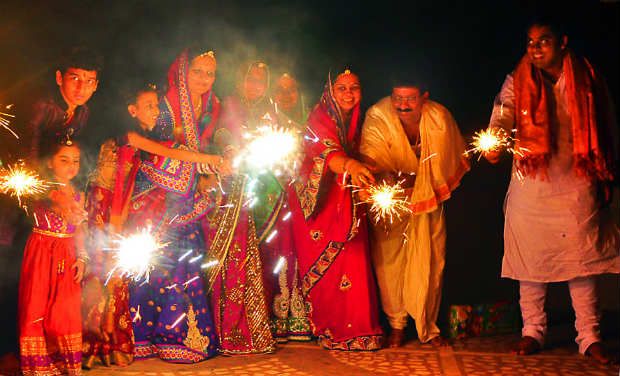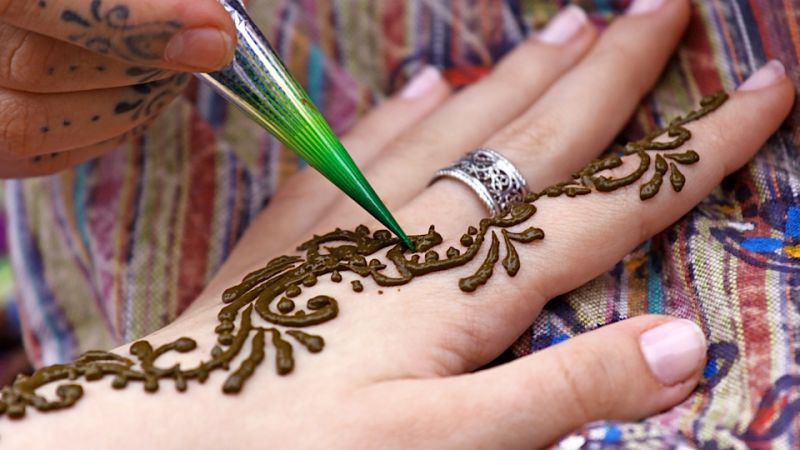The word Gamelan refers to Gamel in Javanese which means the act of drumming or hitting. It’s mainly predominated by percussion instruments that include xylophone, metallophone, spike fiddle (rebab), gong, drum, bamboo flute, strings, several regional instruments, and vocalists called Sindhen on certain occasions.
Indonesian dances are seen as important because it demonstrates the identity of the culture itself. Similarly, Gamelan is also very important. Not only does it help depict stories with music, but it also used for prayer and to entertain people. Therefore, understanding gamelan is paramount as it embodies culture and identity of each area. Although it has declined in popularity, it’s still an integral part of Indonesian culture.
Origins
Gamelan was originally adapted from Hindu-Buddhist culture that was introduced to the Javanese during Majapahit Dynasty. Despite numerous Indian cultural aspects that were adapted to Indonesian culture, the Indian influence of Gamelan only prevails in Javanese way of singing and traditional shadow puppet plays called Wayang Kulit.
Its earliest known use was originally found in the form of a sculpture depicting musicians playing harp, bell, drum, bamboo flute, and strings. The sculpture was embedded on an 8th century temple called Borobudur.
According to Javanese Mythology, Sang Hyang Guru created Gamelan music in Saka era. He was a god who once ruled Java and resided in a palace at Mahendra Mountain (today known as Mount Lawu). At first, the gong was invented by him as a signal to summon other gods. Afterwards, another gong was created to deliver more specific messages. These two gongs were then claimed as the initial model of a Gamelan set.
Javanese Gamelan
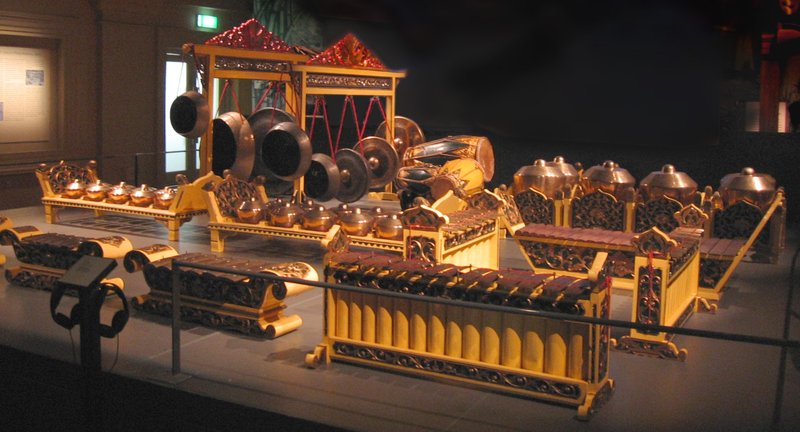
In Java, a classical art performance accompanied by smooth Gamelan music is widely known as Karawitan. This term originates from Sanskrit and Javanese word ‘Rawit’, which means delicate or intricate. Its rhythm generally sounds peaceful and in tune. Often employed in traditional dances, voice, and puppetry art, Karawitan classifies Gamelan based on its function, quantity and type. There are Gamelan Kodhok Ngorek for public wedding ceremony, Gamelan Munggang for royal palace ceremony, Gamelan Sekaten for Islamic-related and royal ceremony and Gamelan Carabalen for guest reception ceremony and entertainment.
Gamelan Kodhok Ngorek and Gamelan Munggang are known as the two oldest Javanese ensemble since 12th century. What makes those two enchanting is that it has established two primary styles of Gamelan music-gentle and loud. Since 17th century the mixture of gentle and loud Gamelan manages to produce a variety of performing methods in Sunda, Java, and Bali Gamelan.
Sundanese Gamelan
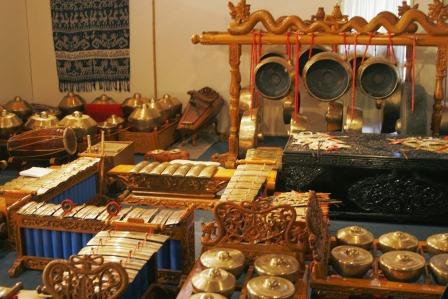
In West Java, Sundanese people usually perform the popular Gamelan Degung for local events and public gatherings. They have three leading Gamelan styles that consist of Gamelan Salendro, Gamelan Degung, and Tembang Sunda. Sundanese gamelan tends to have a distinctive style and is different from gamelan in Java and Bali.
Dominated by Central Javanese rulers in 19th century, Gamelan music owns an intricate orchestral construction. They use two tuning system which are sléndro dan pélog. Slendro is tone sequence system comprises five tones with large intervals in nearly similar distance pattern. Meanwhile Pelog barrel has seven tones with intervals in uneven pattern and it is regularly played in subsets of five among seven notes.
There are also other tuning systems you can use in Gamelan such as Degung (notably for Sundanese Gamelan) and Madenda (which is recognized as diatonic, an European minor scale).
Balinese Gamelan
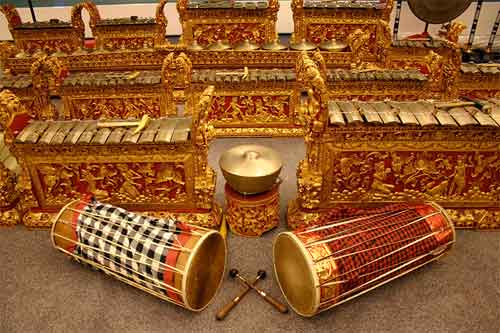
Balinese Gamelan itself has been in around since 8th century as a result of good relations between empires in Java and Bali. One of most prevalent styles in Balinese Gamelan is Gamelan Gong Kebyar. They frequently play Gamelan in Kecak theatrical dance, religious ceremonies, in music and in art performances.
When an instrumentalist performs Gamelan, he determines the rhythm like a leader. He needs to accurately listen to the beats of bonang (small gongs), kenong (cradled gong to emphasize or fill in harmony), saron (xylophone that plays high notes) and be more aware of the melody produced by the fiddle and flute. Other than that, he is required to know the correct timing to raise or lower the tempo. In contrast to Javanese gamelan that is demonstrated in contemplative and slow tempo, Balinese commonly perform in a dynamic and rapid rhythm.
We can discern the culture of a society only based on its gamelan performance. For instance, percussion instruments like gambang or saron are more suitable for those who tend to possess the temperamental nature. On the other hand, string instruments such as siter or rebab (bowed string instrument) are fit for those with the tender trait. After all, a Gamelan performance reflects the attitude of the society but at the same time reveals its dynamics and philosophical beliefs.
Which gamelan performance do you think interests you the most? Tell us in the comments below!


